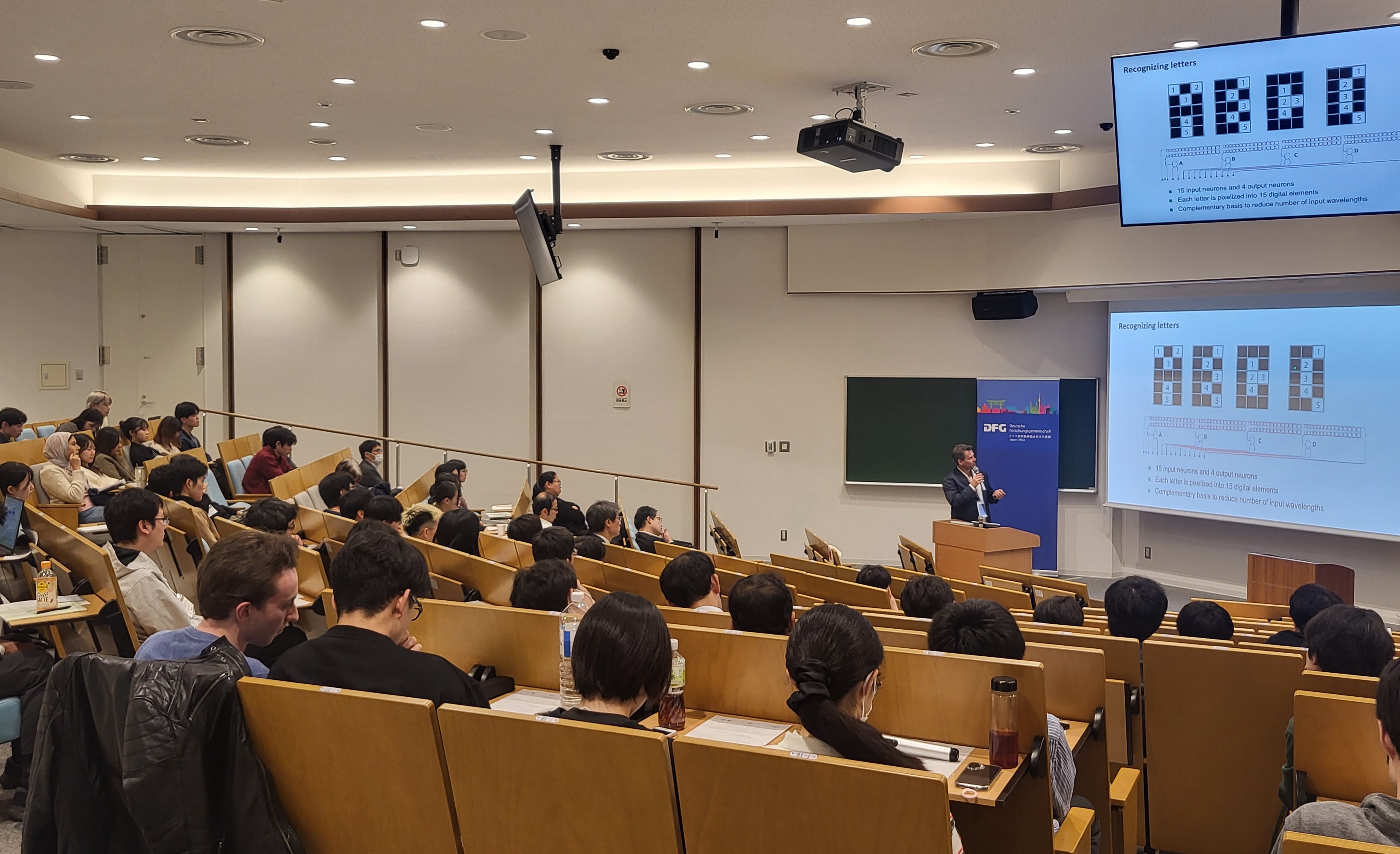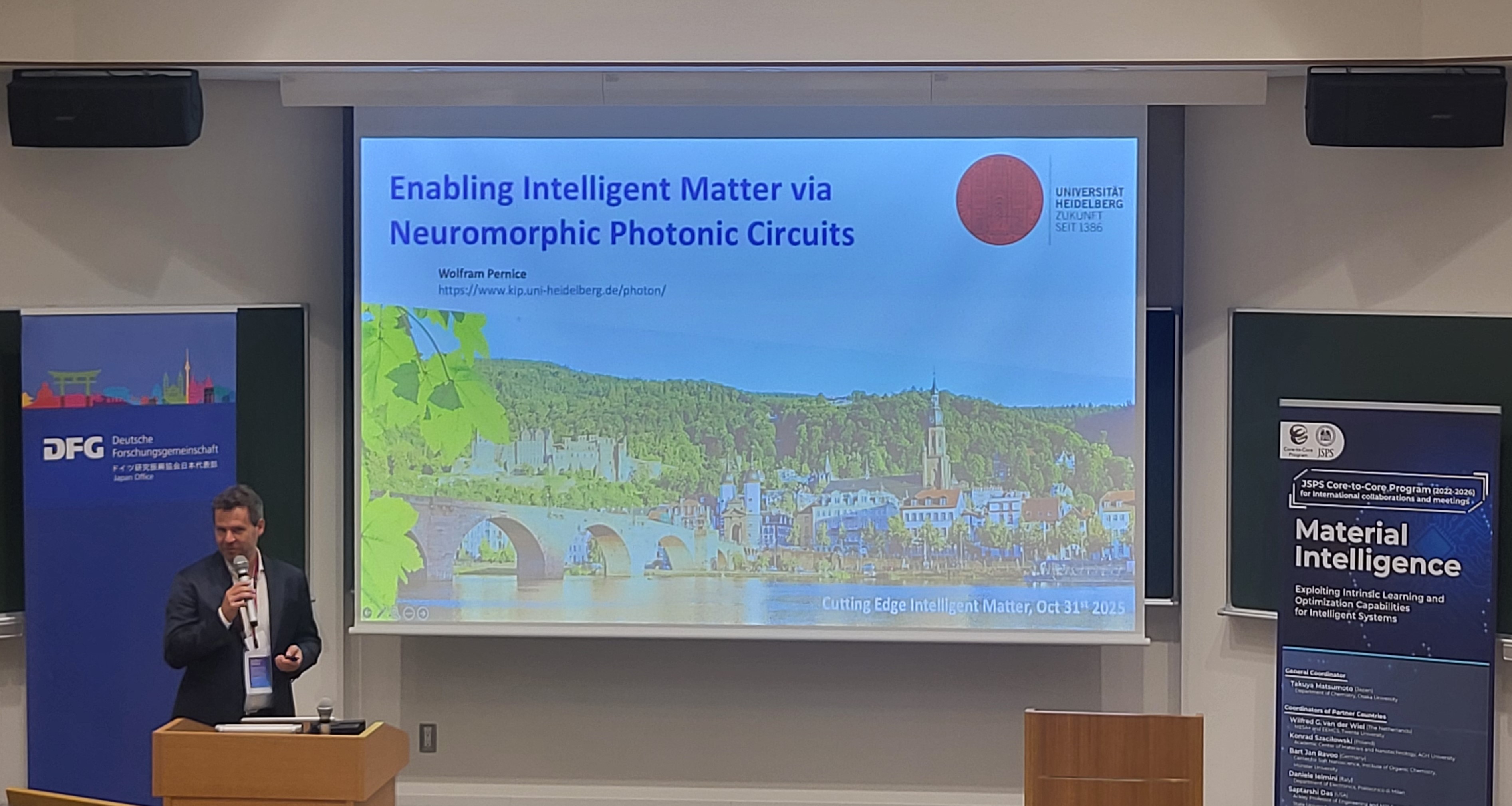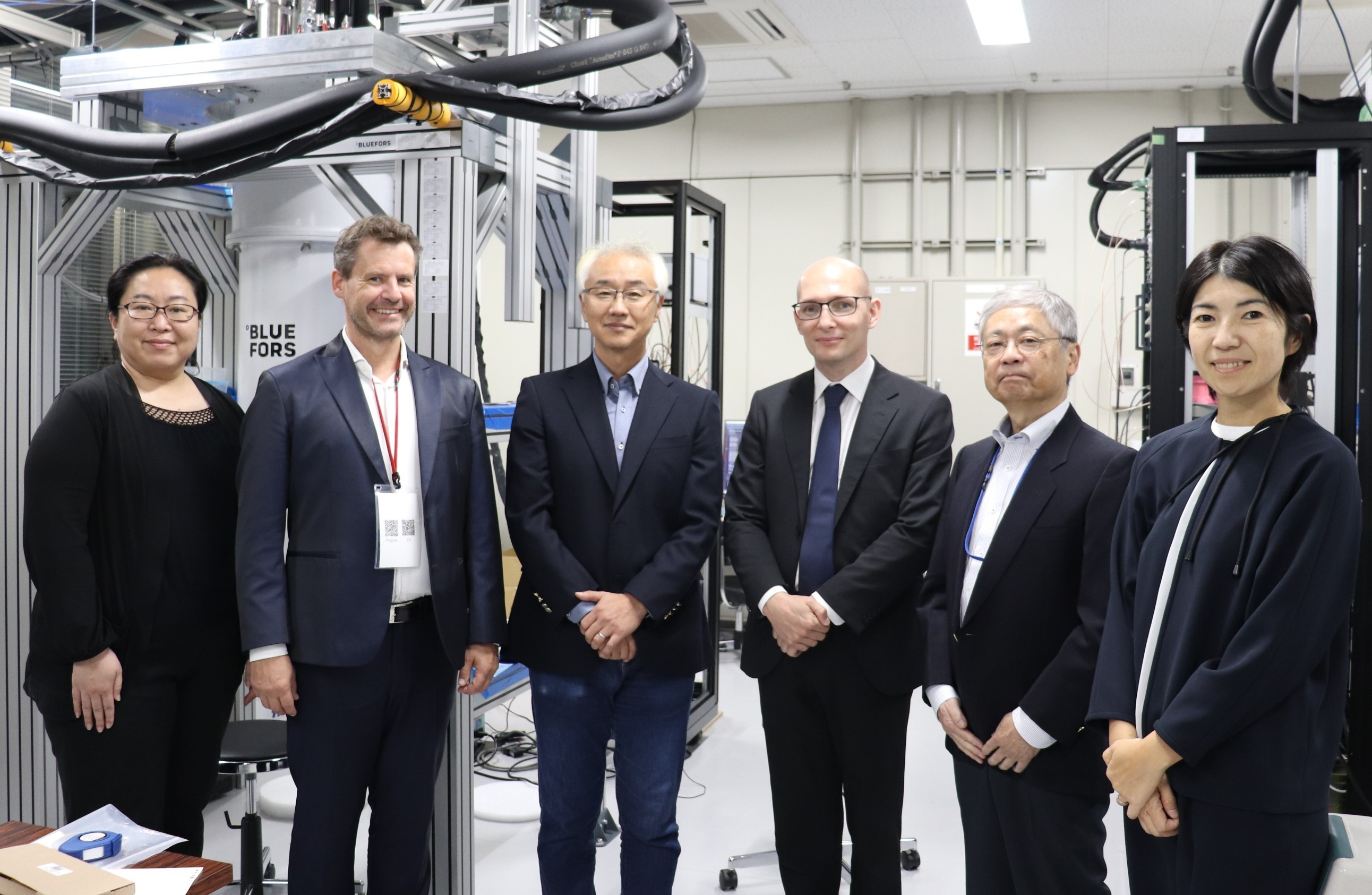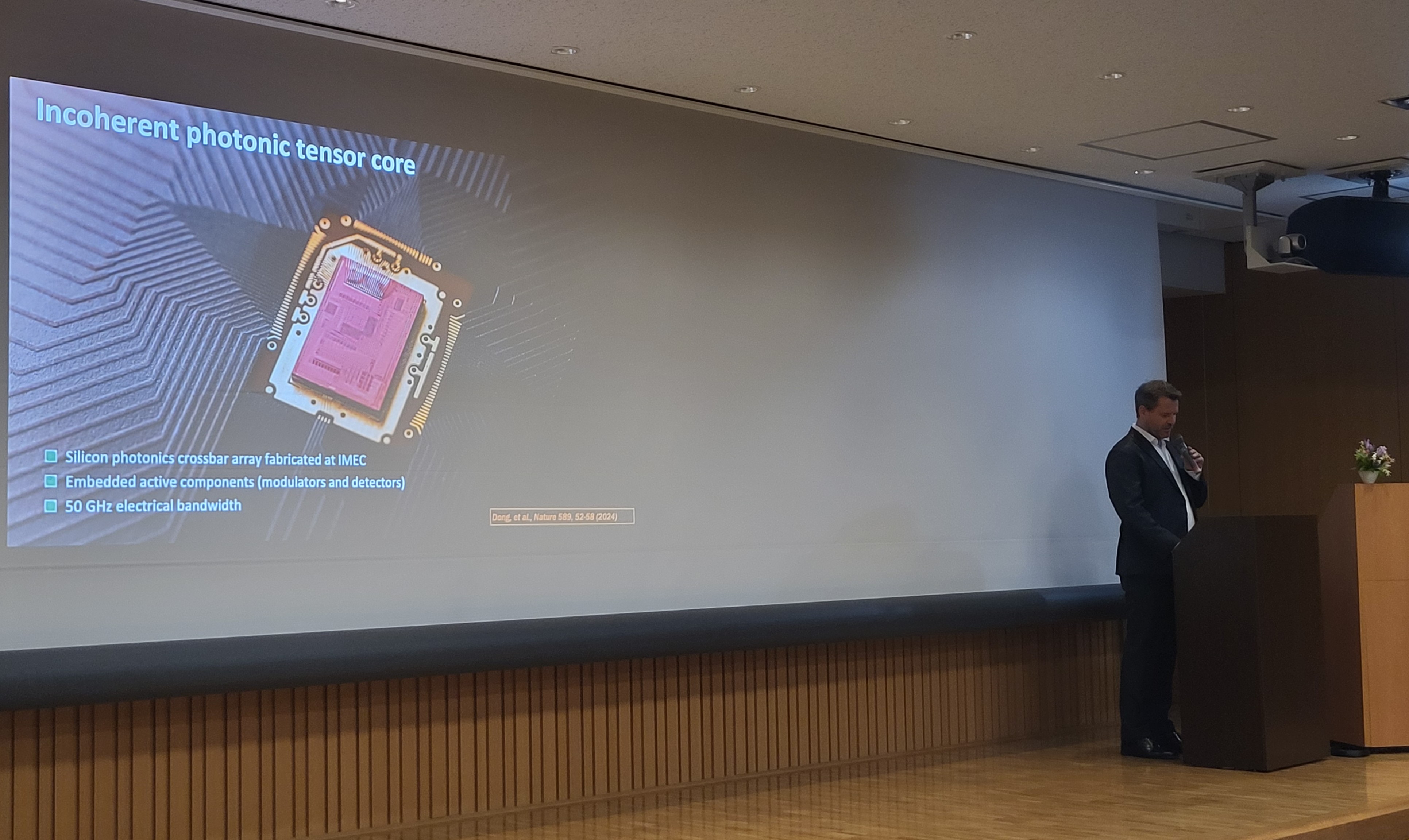DFG Leibniz Lectures in Osaka und Kyoto
Professor Dr. Wolfram Pernice (Heidelberg University), who was awarded the Gottfried Wilhelm Leibniz Prize by the DFG earlier this year, gave two Leibniz Lectures in Osaka and Kyoto at the end of October and the beginning of November 2025. During his lectures titled “Enabling Intelligent Matter via Neuromorphic Photonic Circuits” and “Photonics for Artificial Intelligence and Neuromorphic Computing”, Wolfram Pernice explained how substantial energy savings in the field of AI are possible through the implementation of new technologies.
Leibniz Lecture in Osaka
© DFG
The first lecture was held on 31 October as part of the interdisciplinary symposium “Cutting Edge Intelligent Matter” at the University of Osaka. The event was jointly hosted by the DFG and the Graduate School of Science, University of Osaka. After some opening remarks from Professor Dr. Tadashi Kondo, Dean of Graduate School of Science, University of Osaka, Simon Essler, Deputy Director DFG Office Japan, introduced the DFG and some of its funding programmes. Subsequently, Professor Dr. Takuya Matsumoto (Department of Chemistry) presented the international research project “Material Intelligence” which is funded within the Core-to-Core-Program of the Japan Society for the Promotion of Science (JSPS), and in which Wolfram Pernice – among other researchers – is being involved.
In addition to the lecture of Professor Pernice, Shohei Saito and Masaki Yoshida (Department of Chemistry) as well as Akihito Hashizume, Yoshinori Takashima and Yuichiro Kobayashi (Department of Macromolecular Science) held presentations about current research in their respective fields. In his lecture titled “Enabling Intelligent Matter via Neuromorphic Photonic Circuits”, Wolfram Pernice shed some light on the technology behind specific computer chips that can handle complex computational tasks with minimal energy consumption by using photons.
About 70 participants attended the symposium that was held at the Nambu Yoichiro Hall of the University of Osaka. Participants had the opportunity to partake in further discussions with Wolfram Pernice and the other panelists during a networking reception that followed the event. The symposium and the visits of ILE (Institute of Laser Engineering, The University of Osaka) and SANKEN (Institute of Scientific and Industrial Research, The University of Osaka) offered an opportunity for Professor Pernice to further expand his network of Japanese colleagues from different fields related to materials science.
Wolfram Pernice held his second lecture at Kyoto University on 2 November, the day after the festivities for the 10th anniversary of the Heidelberg University Office Kyoto (HUOK). This lecture at the Horiba Symposium Hall of Kyoto University was named “Heidelberg x Leibniz Lecture” and was the first joint lecture of the DFG and Heidelberg University in Japan. Opening remarks were delivered by Professor Dr. Frauke Melchior, President of Heidelberg University, Sabine Schenk, Head Liaison Office, HUOK, and Simon Essler.
In his lecture titled “Photonics for Artificial Intelligence and Neuromorphic Computing”, Wolfram Pernice pointed out the huge challenge for modern societies that comes with the increasing energy demand for the development of powerful AI systems. He explained how new technologies make it possible to achieve fast computations while at the same time reducing the amount of energy that is needed. He demonstrated in a vivid way how the latest research findings in experimental physics can help us save resources and achieve technological advancements in a sustainable way in areas such as autonomous driving and training of LLMs (Large Language Models). After the lecture, there was a networking lunch that featured information booths from the Deutscher Akademischer Austauschdienst (DAAD), the Deutsches Wissenschafts- und Innovationshaus Tokyo (DWIH), as well as from HUOK and the DFG.



